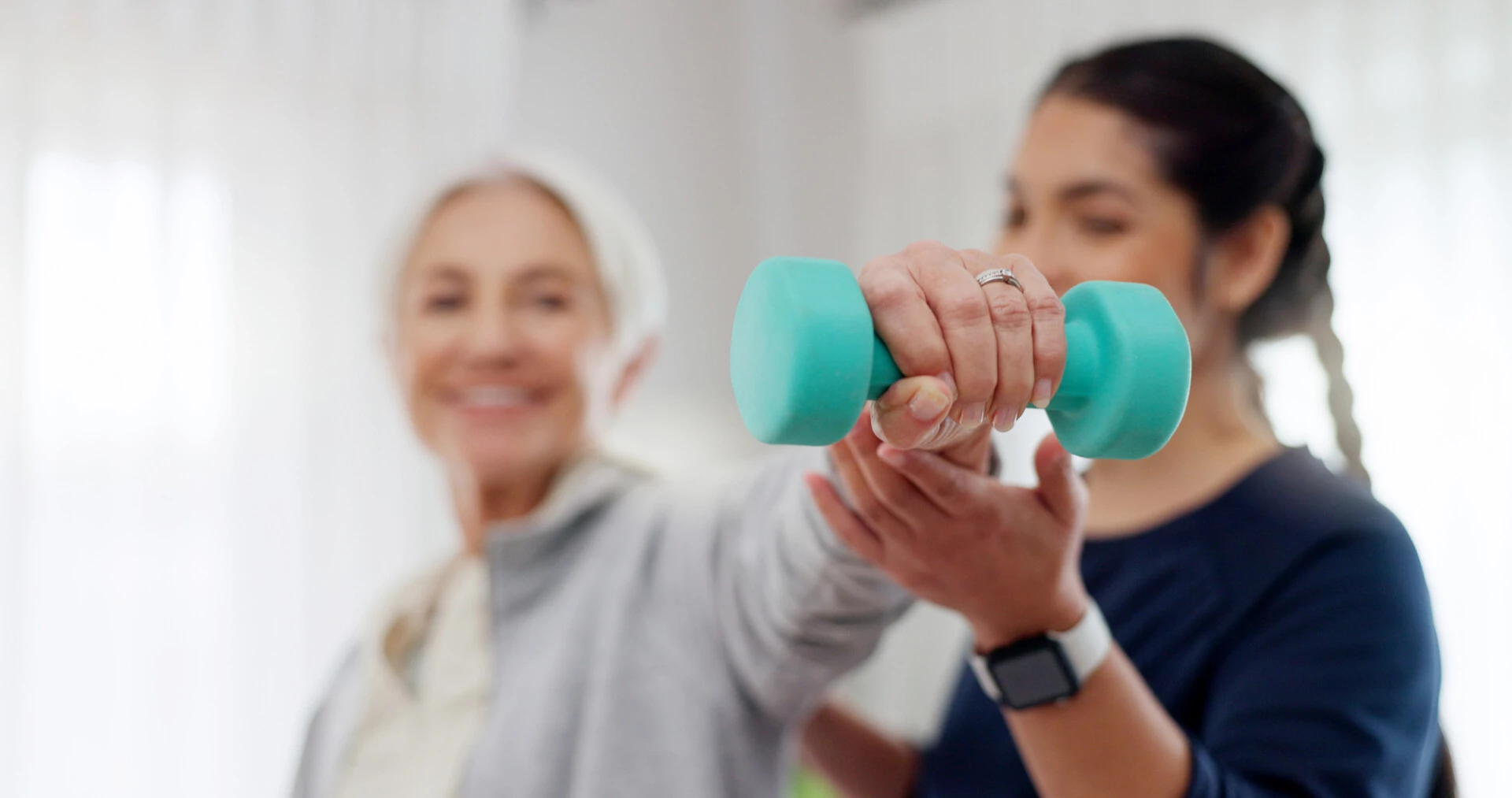Sports injuries – what should recreational athletes know?
16. January 2025

Sport is a key component of a healthy life. Whether jogging, cycling, yoga or team sports – physical activity improves fitness, strengthens the cardiovascular system and contributes to an increased sense of well-being.
But where there is movement, injuries are not far away. Recreational athletes in particular, who train without professional supervision, are often affected by sports injuries.
Common sports injuries among recreational athletes
Even if sport has a positive impact on health, it also carries a certain risk of injury. Some injuries occur particularly frequently because they are caused by typical strains or errors:
- Sprains and strains: Sprains occur when ligaments in joints are overstretched – often due to sudden twisting of the ankle, for example when jogging or playing ball sports. Strains occur when muscles are overstretched due to sudden or excessive strain.
- Tendonitis: Tendonitis, such as the well-known tennis elbow or runner’s knee, is caused by repeated overloading or monotonous movements. This type of injury often develops gradually and manifests itself as pain during movement or exertion.
- Muscle injuries: Torn muscle fibers or bruises are often the result of intense strain or direct force, such as a kick or collision in team sports. Symptoms range from mild pain to severe movement restrictions and swelling.
- Broken bones and joint injuries: More serious injuries such as broken bones or joint damage – such as torn ligaments or meniscus injuries – often occur during falls or sudden twisting movements. These injuries are often associated with severe pain and require medical treatment.
Causes of sports injuries
Many sports injuries can be traced back to the following causes:
- Overloading: Excessively frequent or intensive training without sufficient regeneration overstrains muscles, tendons and joints.
- Lack of preparation: An inadequate warm-up program or a lack of strength and stability training increases the risk of injury.
- Incorrect technique: Incorrect movement sequences or unsuitable equipment, such as poorly fitting sports shoes, put unnecessary strain on the body and often lead to injuries.
Understanding common injuries and their causes is the first step in minimizing risks.
How can sports injuries be avoided?
If you prepare your body properly and pay attention to your individual needs, you can significantly reduce the risk of injury. Here are the most important approaches:
- Warm up and cool down: Warming up increases body temperature, makes muscles and joints more flexible and reduces the risk of injury. For warming up, 5-10 minutes of easy running, jumping rope or cycling or dynamic stretching exercises such as arm circles or leg swings are suitable, while cool-down exercises relax the muscles after training. Gentle stretching exercises for the stressed muscles, combined with deep breathing to calm the circulation, are suitable for this.
- Correct technique and equipment: Incorrect movements put unnecessary strain on muscles, joints and ligaments. Shoes should fit well and meet the specific requirements of the sport (e.g. cushioning when running, stability when hiking). Regular technique training or training under the guidance of an experienced trainer help to improve the quality of movement.
- Regular training and breaks: Excessively intensive training without sufficient recovery leads to muscle fatigue and increases susceptibility to injury. Rest periods allow the body to regenerate and promote muscle building. Plan at least one rest day per week and make sure you get enough sleep.
- Strength and flexibility training: The combination of strength and flexibility training is essential to keep the body resilient and flexible. Exercises for the core and leg muscles are particularly important. Regular stretching increases flexibility and prevents injuries, especially in sports with quick changes of direction or large amplitude of movement.
When should a doctor be consulted?
Not every sports injury can be treated on its own. There are clear warning signs that require a visit to the doctor:
- Severe swelling: If the swelling does not go down despite cooling or increases very quickly.
- Intense pain: Pain that persists at rest or increases significantly with slight movements.
- Bruising: Large or unusually dark bruises may indicate a rupture of blood vessels or tissue.
- Immobility: When a joint or limb can no longer be moved normally or appears unstable.
- Open wounds or deformities: Visible injuries such as broken bones or open wounds require immediate medical attention.
The right first aid can make a decisive contribution to ensuring that an injury heals more quickly and without complications. If the symptoms do not improve after two days, you should have the injury checked out by a doctor.
Long-term treatment and rehabilitation
After an acute sports injury, the right treatment is crucial to promote the healing process and avoid complications later on. In addition to initial treatment, physiotherapy and medical interventions play an important role in restoring full functionality.
Physiotherapy is a central component of rehabilitation. It helps to regain mobility, strength and coordination after an injury and reduce the risk of secondary problems.
Are you struggling with a sports injury? Targeted, gentle therapy is the key to becoming pain-free and active again in the long term!
Whether it’s precise physiotherapy, gentle rehabilitation exercises or individually tailored treatment plans – let us provide you with professional support so that your body returns safe and strong.